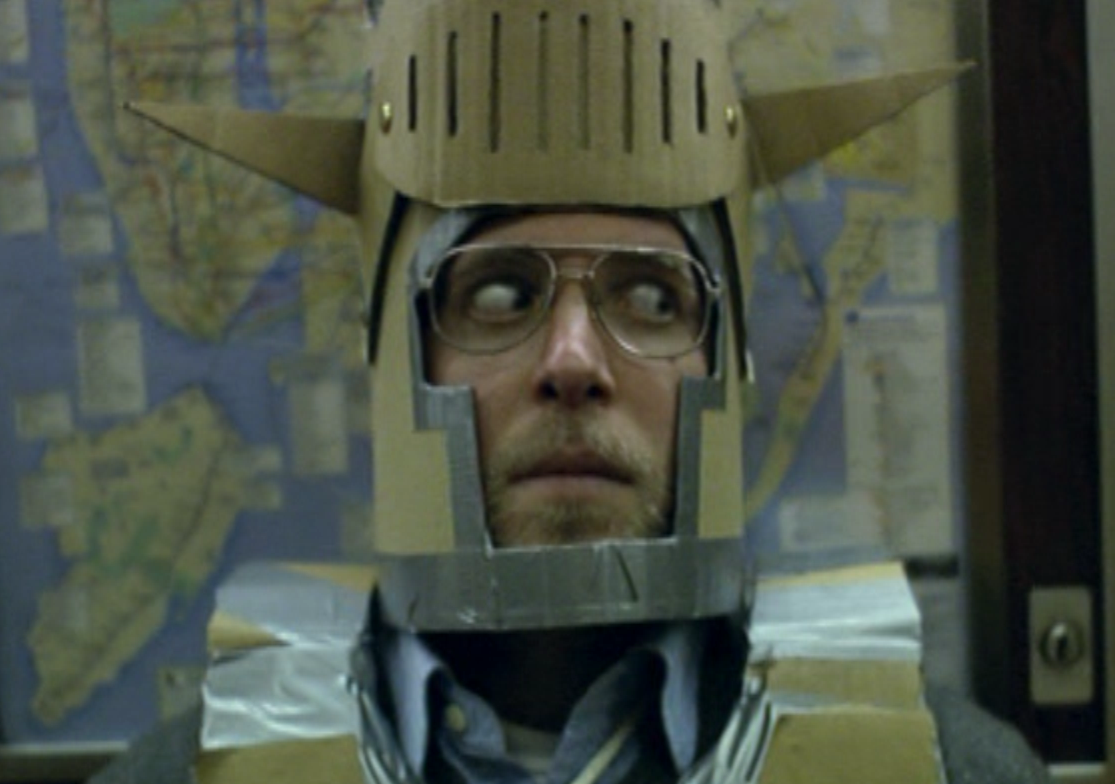
There’s only a little under three months left in 2016 and it’s already looking like year-end lists are going to be stacked. The Invitation. Neon Demon. The Witch. What I’m saying is, 2016 has been a good year for genre filmmaking. And at the forefront of that, possibly even more than the rest of those other movies, is Green Room.
Green Room is a taut siege thriller directed by Jeremy (BLUE RUIN) Saulnier. It follows a group of punks who are trying to survive the night after stumbling into a gig at a Neo-Nazi club, and it’s legitimately the best thriller of 2016. Saulnier has a strong understanding of how tension works and is consistently able to pull the rug out from under viewers with unexpected twists and scares. It’s not a subtle film, and, in fact, works in part because it punctuates long passages of inactivity and silence with sudden bursts of explicit violence.
I mention Saulnier’s skill in crafting Green Room because he had something of a dry run in testing his hand at genre mechanics earlier in his career, on a criminally under-appreciated ode to a mean Halloween in hipster Brooklyn, Murder Party. To be clear, Murder Party is NOT Green Room. It opts for situational expressions of irony rather than the dramatic, it’s characters often feel like overt caricatures of the art world arrived at through improvisation instead of the intentionally underwritten and more subdued punks of Green Room, and, most obviously, the violence is played as an extended series of gags rather than for quick moments of shock. But it also sets up the general premise of Green Room, an individual trapped by fate and being pursued by a group of immensely stupid people, and explores its potential in a way that is complementary to Green Room. Green Room is looking to scare us, while Murder Party wants to make us laugh, but they’re both looking to force a nervous response in us; because, after all, aren’t humor and fear two sides of the same coin?

Murder Party follows Christopher, an inconspicuous schlub who leads a quiet life in Queens. Christopher doesn’t have a social life and, as such, has no plans for Halloween until he finds an unaddressed invitation to a party in Brooklyn drifting along an empty street. On a whim, he decides to cobble together a costume out of cardboard and masking tape and show up to the party unannounced. Unfortunately, the invitation is a trap and Christopher finds himself the centerpiece in a deranged social experiment engineered by an art collective; one member wants to cut Christopher in half and leave his body in an abandoned lot as part of a performance piece; another wants to pour acetic acid on his face and videotape it as it melts, to include in a video installation; and another would simply prefer to paint a portrait of his mutilated corpse. The only common trait among them is that they’ve each devised a way of violently murdering Christopher so they can exploit his death as part of their art.
I don’t think it’s hyperbole to say Murder Party is Saulnier’s “most fun” film, to date. He recognizes the comedic possibility of his setup, that a group of artists could be so detached from reality they would murder someone as a part of their art, and fully embraces the absurdity inherent both in the characters and their interactions with each other. In Murder Party, it’s not enough to have a man wear a werewolf mask to show his relative laziness compared to his more pop culture kitsch-obsessed peers who go all out in imitating obscure cult films. No, by film’s end, he must literally become that monster in the most ridiculous way possible.

The key to Murder Party‘s success, however, is its timing. It’s not a film designed to be watched once, or even one you commit to halfway. Jokes flitter off into the ether unacknowledged until well after a punchline should have landed, Christopher’s beyond dry sense of humor masks some of the films funniest dialogue, and odd sight gags are buried in the background so you won’t immediately notice them; which is to say, Murder Party operates on the assumption that the funniest joke is the one you can only catch on your second or third viewing. And in that sense, the movie is very much a reflection of its hapless lead, a slacker thirty-something with no ambition who’s content to celebrate Halloween by himself watching dumb horror movies until life forces him into participating in one. Murder Party is a film that doesn’t immediately pull you in, as it initially seems like every other mid-aughts indie horror-comedy. It has a threadbare plot that hangs on a flimsy premise and is seemingly held together solely by gratuitous gore and crass dialogue. But once it grabs ahold of you, you’re not getting out. Or as Bill, the Baseball Fury, eloquently puts it, “Fuck the scene. Everybody dies!”
So, just as Saulnier succeeds in making us squirm in our seats thanks to the claustrophobic environment and menacing thugs of Green Room, he is equally able to force a nervous snicker or full-blown laughter from the strange scenarios and bizarre characters in Murder Party. He accomplishes this by essentially remaking the same film for the purpose of exploring an entirely new, although complementary set of emotions. Murder Party isn’t technically a siege film but it still operates in a similar mode and Saulnier subtly flips the script from that film, where the attackers are already inside, to Green Room, where they’re trying to get in. With that in mind, I can’t think of a better way to spend the Halloween season than delving deep into both of those interlocking emotions and watching Green Room and Murder Party back-to-back to see how Saulnier is able to exploit both using the same basic framework.




